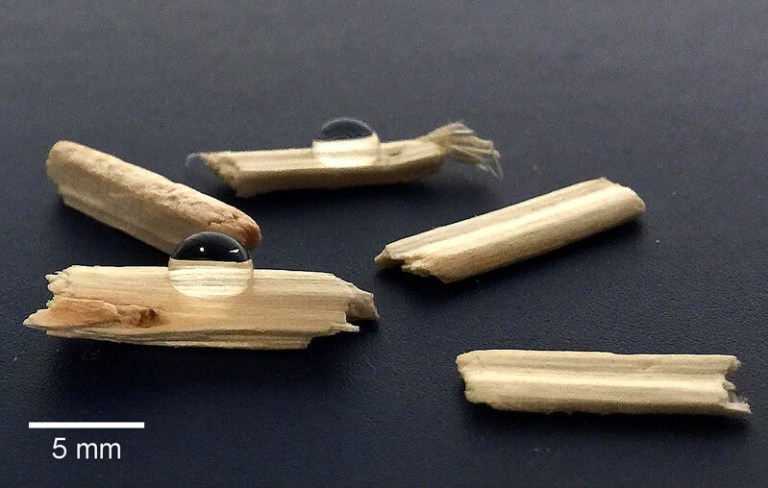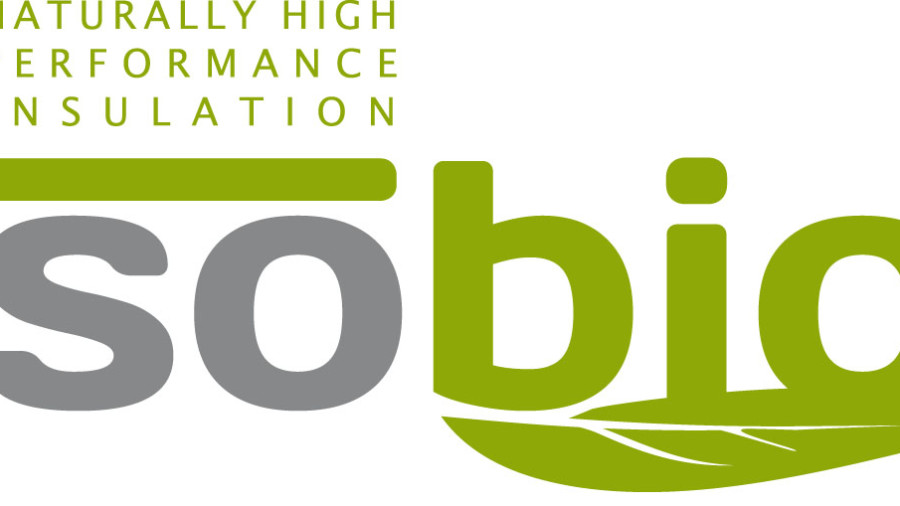Chemical composition and the geometric structure of a surface of a material are the two main attributes that govern the wettability characteristics of any material.
In pursuit for better and economical building materials, researchers have unearthed hemp shiv: the woody core of the hemp plant. Hemp shiv has been seen to possess exemplary attributes (such as excellent thermal insulation, hygroscopicity, mechanic-ability, biodegradability and good acoustic absorbance) that approve its utilization in the fabrication of light weight composites. Contra wise, not only does hemp shiv possess a higher water absorption rate due to its highly porous structure, but also has cellulose, hemicellulose and lignin which make it incompatible with hydrophobic thermoset/thermoplastic polymers. Excess moisture conditions can lead to degradation and decay of hemp based composites. Consequently, this can be resolved by converting cellulose-based hydrophilic materials to hydrophobic via chemical modification.
Several techniques have already been established, however, none is applicable for the treatment of hemp shiv. Fortunately, sol-gel technology has shown good results when used to deposit silica-based water repellant coatings on bio-based materials. Therefore, there is need to investigate its capability to efficiently coat hemp shiv.
To this note, a team of researchers, Atif Hussain (PhD Student), Dr Juliana Calabria-Holley, Dr Yunhong Jiang and Dr. Mike Lawrence at the BRE Centre for Innovative Construction Materials- Department of Architecture and Civil Engineering at University of Bath in the UK in collaboration with Canadian researchers at University of Laval, Dr Diane Schorr and Professor Pierre Blanchet incorporated sol-gel technology for the first time in the treatment of hemp shiv in order to develop a superior bio-based aggregate for sustainable high performance thermal insulation building composites. Additionally, they investigated the influence of catalysts, solvent dilution and hexadecyltrimethoxysilane (HDTMS) loading in the silica sols on the hydrophobicity of hemp shiv surface. Their work is currently published in the research journal, Applied Surface Science.
Their research method commenced with the preparation of the hydrophobic coatings. Next, the water contact angle of the uncoated hemp shiv samples was determined. Using 3D optical profilometer, the researchers obtained the topography and surface roughness of the samples. They then proceeded to analyze the surface elemental and chemical composition of the samples. Lastly, they characterized the surface morphology of the specimens using scanning electron microscopy.
The authors observed that the hydrophobicity of sol-gel coated hemp shiv increased significantly when using acid catalyzed sols which provided water contact angles of up to 118° at 1% HDTMS loading. The researches also noted that the ethanol diluted sol-gel coatings enhanced the surface roughness of the hemp shiv by 36% as observed under 3D optical profilometer. Finally, the X-ray photoelectron spectroscopy results revealed that the surface chemical composition of the hemp shiv was altered by the sol-gel coating, blocking the hydroxyl sites responsible for hydrophilicity.
Atif Hussain and colleagues study presented a facile single step dip-coating process that was successfully applied to form a hydrophobic surface onto an extremely hydrophilic bio-based aggregate. Generally, the hydrophobic properties were achieved through a combination of topological alteration and chemical modification of the hemp shiv by the modified silica-based sol-gel coatings. Altogether, coatings with low HDTMS precursor loading would be of interest to the bio-based building industry due to its hygroscopic properties, long shelf life, economical and lower environmental impact.

